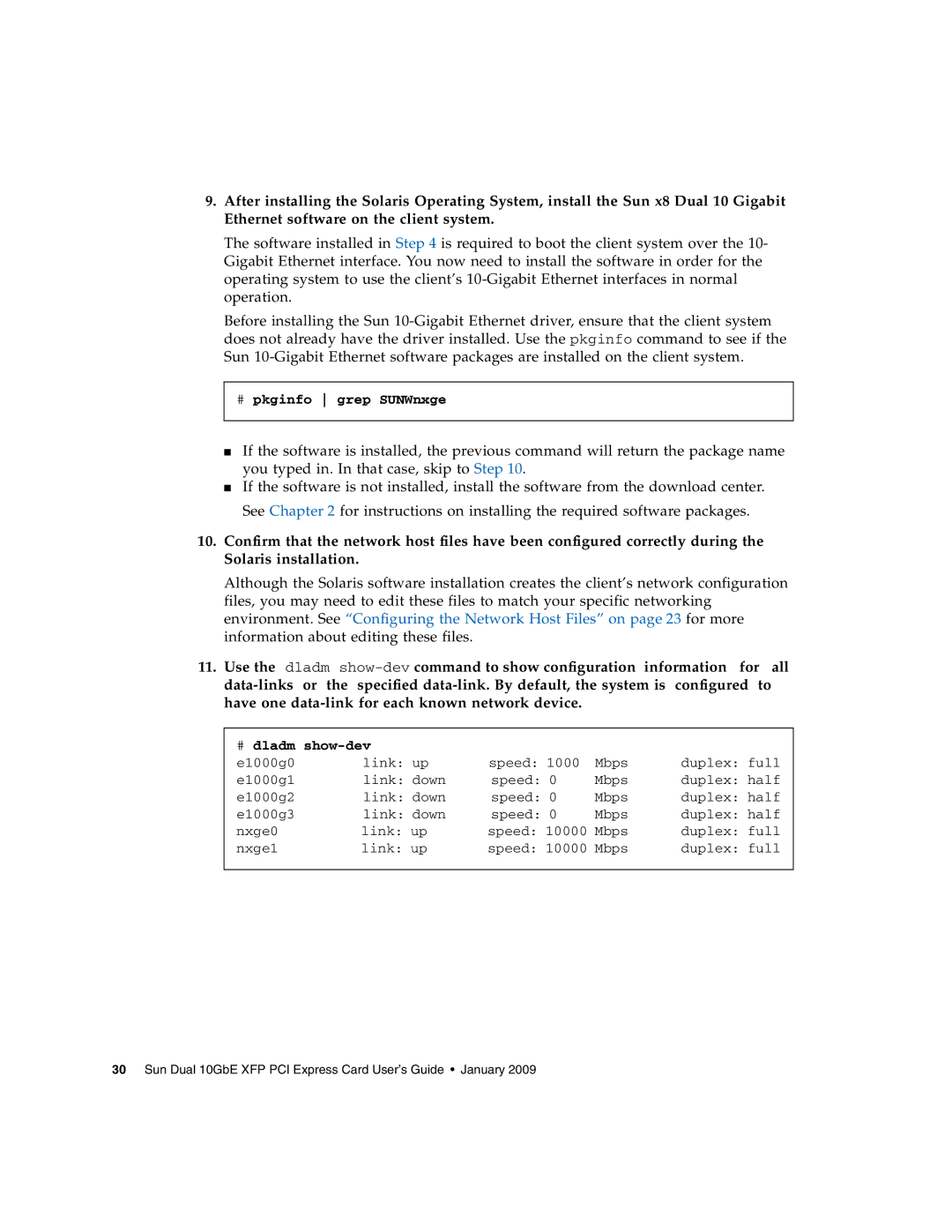
9.After installing the Solaris Operating System, install the Sun x8 Dual 10 Gigabit Ethernet software on the client system.
The software installed in Step 4 is required to boot the client system over the 10- Gigabit Ethernet interface. You now need to install the software in order for the operating system to use the client’s
Before installing the Sun
#pkginfo grep SUNWnxge
■If the software is installed, the previous command will return the package name you typed in. In that case, skip to Step 10.
■If the software is not installed, install the software from the download center. See Chapter 2 for instructions on installing the required software packages.
10.Confirm that the network host files have been configured correctly during the Solaris installation.
Although the Solaris software installation creates the client’s network configuration files, you may need to edit these files to match your specific networking environment. See “Configuring the Network Host Files” on page 23 for more information about editing these files.
11.Use the dladm
# dladm |
|
|
| |
e1000g0 | link: up | speed: 1000 | Mbps | duplex: full |
e1000g1 | link: down | speed: 0 | Mbps | duplex: half |
e1000g2 | link: down | speed: 0 | Mbps | duplex: half |
e1000g3 | link: down | speed: 0 | Mbps | duplex: half |
nxge0 | link: up | speed: 10000 Mbps | duplex: full | |
nxge1 | link: up | speed: 10000 Mbps | duplex: full | |
|
|
|
|
|
